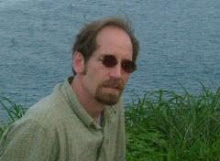Tiananmen Rebellion

The Unknown Rebel
by Pico Iyer
With a single act of defiance, a lone Chinese hero revived the world's image of courage
Almost nobody knew his name. Nobody outside his immediate neighborhood had read his words or heard him speak. Nobody knows what happened to him even one hour after his moment in the world's living rooms. But the man who stood before a column of tanks near Tiananmen Square — June 5, 1989 — may have impressed his image on the global memory more vividly, more intimately than even Sun Yat-sen did. Almost certainly he was seen in his moment of self-transcendence by more people than ever laid eyes on Winston Churchill, Albert Einstein and James Joyce combined.
The meaning of his moment — it was no more than that — was instantly decipherable in any tongue, to any age: even the billions who cannot read and those who have never heard of Mao Zedong could follow what the "tank man" did. A small, unexceptional figure in slacks and white shirt, carrying what looks to be his shopping, posts himself before an approaching tank, with a line of 17 more tanks behind it. The tank swerves right; he, to block it, moves left. The tank swerves left; he moves right. Then this anonymous bystander clambers up onto the vehicle of war and says something to its driver, which comes down to us as: "Why are you here? My city is in chaos because of you."
One lone Everyman standing up to machinery, to force, to all the massed weight of the People's Republic — the largest nation in the world, comprising more than 1 billion people — while its all powerful leaders remain, as ever, in hiding somewhere within the bowels of the Great Hall of the People.
Occasionally, unexpectedly, history consents to disguise itself as allegory, and China, which traffics in grand impersonals, has often led the world in mass-producing symbols in block capitals. The man who defied the tank was standing, as it happens, on the Avenue of Eternal Peace, just a minute away from the Gate of Heavenly Peace, which leads into the Forbidden City. Nearby Tiananmen Square — the very heart of the Middle Kingdom, where students had demonstrated in 1919; where Mao had proclaimed a "People's Republic" in 1949 on behalf of the Chinese people who had "stood up"; and where leaders customarily inspect their People's Liberation Army troops — is a virtual monument to People Power in the abstract. Its western edge is taken up by the Great Hall of the People. Its eastern side is dominated by the Museum of Chinese Revolution. The Mao Zedong mausoleum swallows up its southern face.
For seven weeks, though, in the late spring of 1989 — the modern year of revolutions — the Chinese people took back the square, first a few workers and students and teachers and soldiers, then more and more, until more than 1 million had assembled there. They set up, in the heart of the ancient nation, their own world within the world, complete with a daily newspaper, a broadcasting tent, even a 30-ft. plaster-covered statue they called the "Goddess of Democracy." Their "conference hall" was a Kentucky Fried Chicken parlor on the southwest corner of the square, and their spokesmen were 3,000 hunger strikers who spilled all over the central Monument to the People's Heroes. The unofficials even took over, and reversed, the formal symbolism of the government's ritual pageantry: when Mikhail Gorbachev came to the Great Hall of the People for a grand state banquet during the demonstrations--the first visit by a Soviet leader in 30 years — he had to steal in by the back door.
Then, in the dark early hours of June 4, the government struck back, sending tanks from all directions toward Tiananmen Square and killing hundreds of workers and students and doctors and children, many later found shot in the back. In the unnatural quiet after the massacre, with the six-lane streets eerily empty and a burned-out bus along the road, it fell to the tank man to serve as the last great defender of the peace, an Unknown Soldier in the struggle for human rights. . . .
~~~ ~~~ ~~~
Pico Iyer's tribute to the Tiananmen rebellion continues at:
http://www.asianamericans.com/TiananmenSquare.htm



0 Comments:
Post a Comment
<< Home